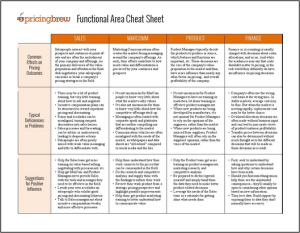Today, I’d like to talk about something I don’t think we’ve ever discussed on PricingBrew before: bananas.
(Trust us, this really does have something to do with pricing.)
When you go to the grocery store and buy a bunch of bananas, you are almost certainly getting Cavendish bananas. That’s because nearly all of the bananas sold for export are Cavendish bananas. These are the familiar yellow color and shape you think of when someone says the word “banana.” However, in the wild, bananas actually come in lots of different colors—green, red, purple, brown, and even pink.
Cavendish bananas don’t actually grow in the wild. They are a hybrid first cultivated in England in 1834, and they don’t produce seeds. In order to make more Cavendish banana plants, farmers graft Cavendish stock onto other plants. So genetically, almost all of the bananas sold around the world are essentially the same plant.
This is a problem because a new type of fungus—the not-so-cleverly-named Tropical Race 4—is killing off Cavendish bananas. Scientists and farmers don’t know of any way to kill the fungus, so it could be just a matter of time before the plants that supply nearly all of the world’s bananas are dead. And because of the lack of diversity in the banana market, we don’t have an alternative that is resistant to Race 4.
The really ridiculous part is that this has all happened before.
Back at the turn of the twentieth century, almost all the bananas sold were from the Gros Michel strain—until a fungus called Tropical Race 1 wiped out nearly all the Gros Michel plants. (This inspired the song “Yes, We Have No Bananas.”) In response, farmers began growing Cavendish bananas, which were resistant to Race 1.
But the industry didn’t really learn its lesson. Instead of diversifying, it just moved en masse to the Cavendish stock, which led to the predicament they face today.
You can read more about this story at Quartz, but the reason we brought it up was to talk about the importance of diversity of ideas.
Within the pricing profession, people tend to be very secretive. Companies don’t want to share what has worked for them because they don’t want their competitors to steal their best tactics. And they definitely don’t want customers finding out how they set their prices.
When it comes time to hire new pricing people, companies generally recruit from within their own industries. One pricing pro describes this as “breathing their own exhaust.”
The net result is that we don’t have enough cross-pollination and diversity of ideas within the profession. If pricing pros keep going back to the same well too many times, their techniques will become less effective and eventually stop working.
At PricingBrew, we don’t want the same thing that is happening to bananas to happen to pricing. That’s why we try to bring together lots of different strategies and concepts from different industries.
If your approach could use a breath of fresh air, we recommend starting with one of the following resources that collects ideas from a variety of sources:
- Five Tips for More Effective Price Segmentation
- Seven Strategies for Boosting Margin Dollars
- Competitive Insights for More Strategic Pricing
- Combating Competitive Pricing Pressure
It’s time to learn the lesson the banana industry should have learned a century ago. Let’s start cultivating some diversity of ideas within the pricing profession so that we don’t ever face the possibility of extinction.
Five Strategies for Better Price Segmentation
Seven Strategies for Boosting Margin Dollars
Competitive Insights for More Strategic Pricing
Combating Competitive Pricing Pressure

















